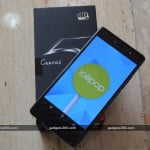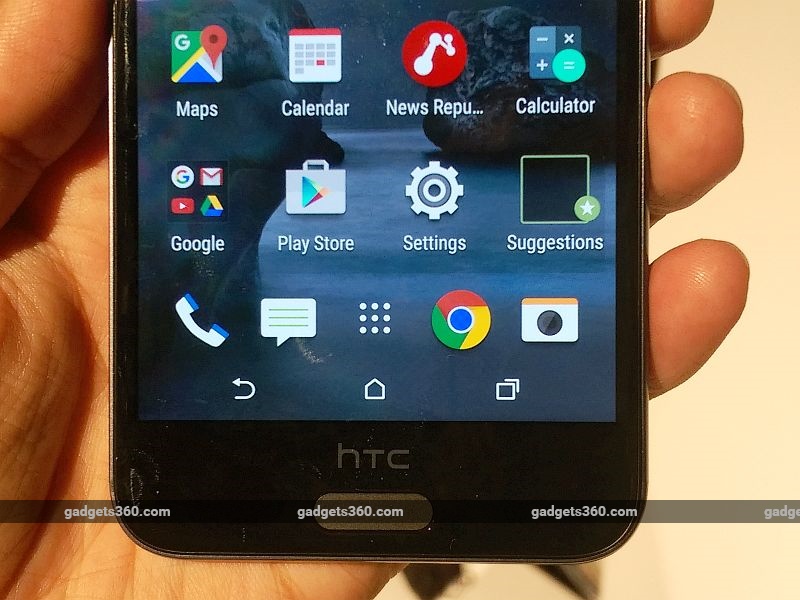
Ever since HTC unveiled its One A9 smartphone back in October in New York, the smartphone has been in news thanks to its similarity to the iPhone 6. Following several reports calling the One A9’s design’heavily’ inspired by the iPhone, the Taiwanese company got defensive, refuting the claims and even suggested that Apple had copied HTC and not vice-versa.
The phone has only been available in a limited number of markets till now. HTC on Wednesdayannounced the HTC One A9 in India alongside the Desire 828 Dual SIM. The company confirmed that both phones will start shipping to India in the next two weeks, and has chosen to withhold pricing information until then. The company stated that pricing will be announced closer to the date of availability. In line with what the company’s Chairwoman and CEO Cher Wang has previously said, the company stressed that the One A9 will be a ‘good alternative to the iPhone.’ The HTC One A9 boasts of a metal unibody design as well as impressive innards.
As for the new HTC Desire 828 Dual SIM, the company touts that it’s the first model in the Desire range that comes with OIS (optical image stabilisation). We spent some time with both the new One A9 and Desire 828 Dual SIM at the launch event and here are our first impressions.
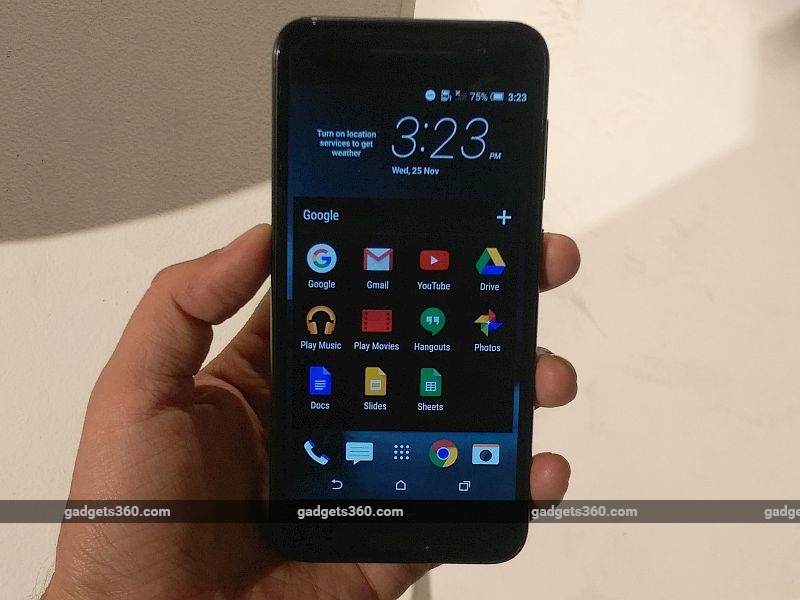 HTC has been using unibody designs since the original One (later known as the One M7) was launched in 2013. This signature design language started feeling repetitive with its flagship launches in the following years, the HTC One (M8) in 2014 and this year’s One M9, both looking very similar. The HTC One A9 however is a much-needed break. The unibody design now features a thin profile and edge-to-edge 2.5D Corning Gorilla Glass.
HTC has been using unibody designs since the original One (later known as the One M7) was launched in 2013. This signature design language started feeling repetitive with its flagship launches in the following years, the HTC One (M8) in 2014 and this year’s One M9, both looking very similar. The HTC One A9 however is a much-needed break. The unibody design now features a thin profile and edge-to-edge 2.5D Corning Gorilla Glass.
When we first held the HTC One A9, we were impressed with its build quality as well as the design. It easily fit in our hands despite featuring a 5-inch screen. It’s a new look for HTC but there’s no denying the similarities to the iPhone 6 and iPhone 6s. The front looks slightly different from Apple’s design thanks to the oblong fingerprint scanner on the One A9. The rear is where the handset most resembles the iPhones, especially because of the antenna bands. The smartphone will be available in Carbon Grey, Opal Silver, Topaz Gold, and Deep Garnet colours. We played with a Deep Garnet unit. HTC at the launch event stressed that the One A9’s body is constructed with jewellery-grade precision, referring to the bead-blasting and polishing processes that give it its finish.
The handset features on-screen Back, Home, and Recents buttons. The fingerprint scanner can be used for unlocking the handset. In the limited time we had with the device, we tried using the fingerprint scanner and it worked well, responding to touch and unlocking the phone promptly. The One A9’s volume rocker and power button are on the right, while the SIM and microSD card slots are on the left. The bottom has the speaker grille, charging port and 3.5mm audio jack.
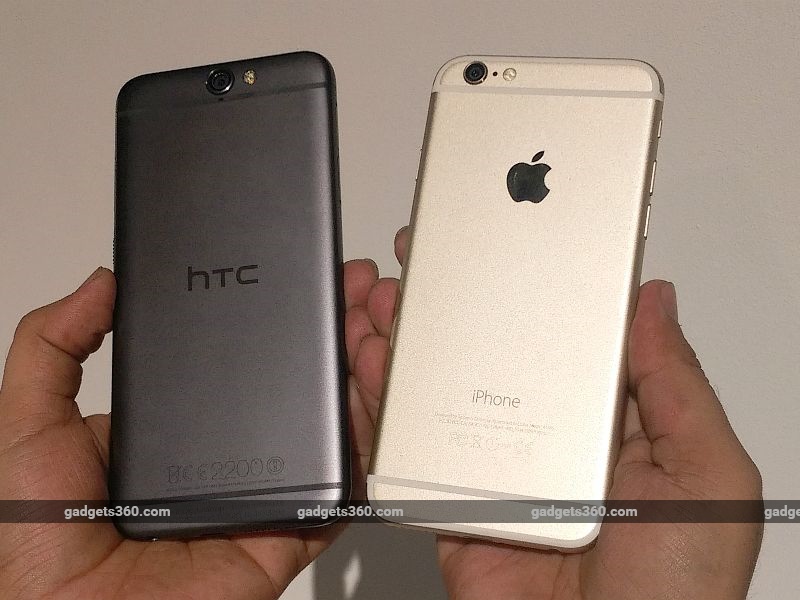 In terms of specifications, the One A9 is powered by a 64-bit Qualcomm Snapdragon 617 processor with four cores clocked at 1.5GHz and four cores at 1.2GHz. The phone packs in 3GB of RAM and 32GB of storage, and supports microSD cards of up to 2TB. The 5-inch full-HD (1080×1920 pixels) display is complemented by a 13-megapixel rear camera with sapphire cover lens, f/2.0 aperture, autofocus, BSI sensor, OIS (optical image stabilisation), support for 1080p video recording, and an LED flash module. There is also a 4-UltraPixel front-facing fixed-focus camera. The handset is powered by a 2150mAh battery.
In terms of specifications, the One A9 is powered by a 64-bit Qualcomm Snapdragon 617 processor with four cores clocked at 1.5GHz and four cores at 1.2GHz. The phone packs in 3GB of RAM and 32GB of storage, and supports microSD cards of up to 2TB. The 5-inch full-HD (1080×1920 pixels) display is complemented by a 13-megapixel rear camera with sapphire cover lens, f/2.0 aperture, autofocus, BSI sensor, OIS (optical image stabilisation), support for 1080p video recording, and an LED flash module. There is also a 4-UltraPixel front-facing fixed-focus camera. The handset is powered by a 2150mAh battery.
The full-HD Amoled display on the One A9 looked bright and colour reproduction was satisfactory. The viewing angles on the smartphone were also good, and visibility under direct artificial lights was impressive. The company at the launch revealed that it has tweaked the handset for directly sunlight visibility and expects it to perform well in such conditions. During our limited time spent with the One A9, we found that it was responsive to touch inputs and was quick with multitasking.
The 13-megapixel rear camera on the One A9 took some crisp images under the controlled indoor light conditions. We hope that the OIS feature will help this handset compete against other high-end Android handsets. The camera bulges out slightly, like it does on many other smartphones. The front UltraPixel camera also managed to capture some decent selfies. Some of the modes in the camera app include Slow Motion, Hyperlapse, Pro, Panorama, and Selfie. Stay tuned for our detailed review when we will really get a chance to test the camera under varied conditions.
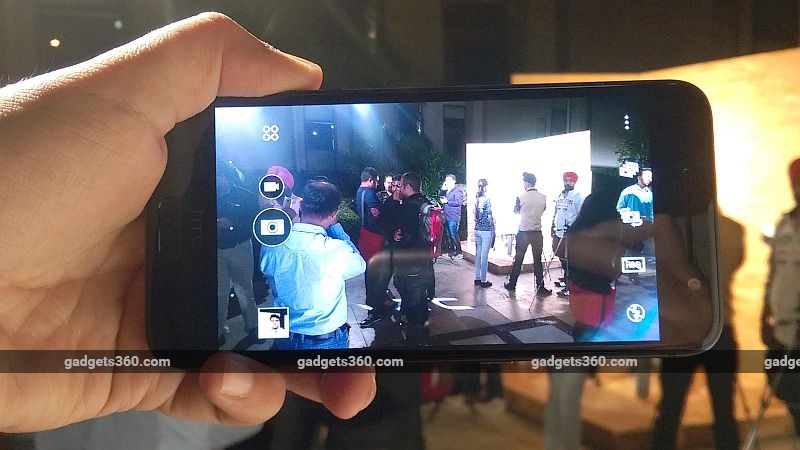 Another notable feature of the One A9 is that it runs Android 6.0 Marshmallow with the company’s Sense UI on top. HTC India touted that the One A9 is the first handset to launch with Marshmallow running out-of-the-box and the first non-nexus handset. The UI looks refreshing and seems to be an upgrade over what we’ve seen on the One M9+ in our review. The new UI brings some neat touches including more customisation options. A Themes app comes preloaded on the One A9. One of the company’s representatives told us at the launch that HTC now has more than 25,000 themes and sees good number of downloads from users, though it isn’t sharing exact download numbers. HTC’s BlinkFeed is still part of Sense UI, but due to connectivity issues at the launch event, we were unable to see what has changed in the latest version.
Another notable feature of the One A9 is that it runs Android 6.0 Marshmallow with the company’s Sense UI on top. HTC India touted that the One A9 is the first handset to launch with Marshmallow running out-of-the-box and the first non-nexus handset. The UI looks refreshing and seems to be an upgrade over what we’ve seen on the One M9+ in our review. The new UI brings some neat touches including more customisation options. A Themes app comes preloaded on the One A9. One of the company’s representatives told us at the launch that HTC now has more than 25,000 themes and sees good number of downloads from users, though it isn’t sharing exact download numbers. HTC’s BlinkFeed is still part of Sense UI, but due to connectivity issues at the launch event, we were unable to see what has changed in the latest version.
On the other hand, the HTC Desire 828 Dual SIM strictly follows the established Desire series design, which means lots of polycarbonate. The device will require two hands to operate due to the 5.5-inch screen. Much like the One A9, the Desire 828 Dual SIM also features on-screen Back, Home, and Recents buttons. The right panel holds the volume rocker and power buttons while the left has slots for the two SIMs as well as a microSD card. The Desire 828 Dual SIM features BoomSound stereo speakers, which are complemented by Dolby audio enhancement.
The handset, unlike the One A9, runs Android 5.1 Lollipop with Sense 7. It features a 5.5-inch full-HD (1080×1920 pixels) IPS display; a 13-megapixel rear camera with LED flash, OIS, and BSI sensor; an UltraPixel front camera with a BSI sensor; dual-SIM (dual-4G); an octa-core MediaTek MT6753 SoC clocked at 1.5GHz; 2GB of RAM; 16GB of inbuilt storage; support for microSD cards of up to 2TB; and a 2800mAh battery.
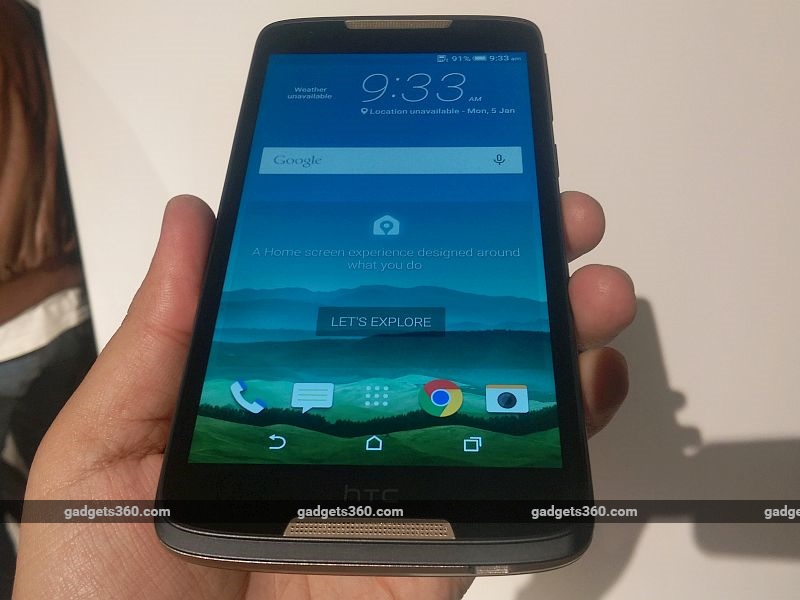 The full-HD display looked impressive and colour reproduction was decent. Visibility under direct artificial lights however was below par. Visibility under natural light might be a problem for Desire 828 Dual SIM, but we would wait until we spend more time with the device as part of our detailed review process before judging that. The ohone responded to our touch inputs with ease and even handled constant switches between the camera app and other apps without any noticeable slowdowns. The rear camera took some satisfactory shots in good lighting. The front camera however did only an average job with the selfies, which lacked details and looked slightly hazy.
The full-HD display looked impressive and colour reproduction was decent. Visibility under direct artificial lights however was below par. Visibility under natural light might be a problem for Desire 828 Dual SIM, but we would wait until we spend more time with the device as part of our detailed review process before judging that. The ohone responded to our touch inputs with ease and even handled constant switches between the camera app and other apps without any noticeable slowdowns. The rear camera took some satisfactory shots in good lighting. The front camera however did only an average job with the selfies, which lacked details and looked slightly hazy.
The HTC One A9 was initially launched at $399.99 (approximately Rs. 26,000) unlocked, as a special offer price in the US. The company later revised the price to $499.99 (roughly Rs. 32,500) for unlocked units, hinting that we can expect the handset to be priced around the same price in India. If this turns out to be the case, HTC’s new One A9 will compete against the LG Google Nexus 5X and Motorola Moto X Style – both currently available at around the same price. A company representative however pointed at the launch event that the current conversion rate might not allow the company to price the One A9 competitively.
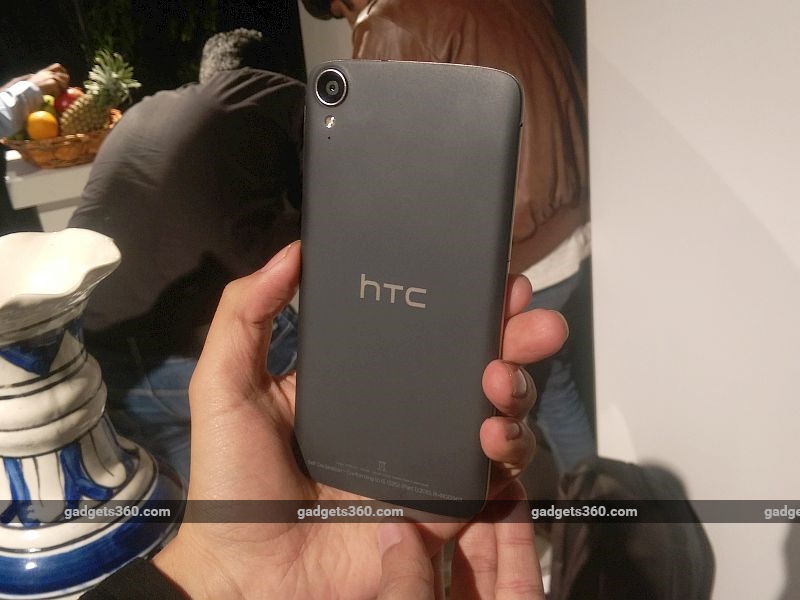 We can expect the Desire 828 Dual SIM to be priced at roughly Rs. 15,000-20,000 considering that it was unveiled in China at CNY 1,599 (approximately Rs. 16,500). One of the biggest competitors for the Desire 828 Dual SIM will be the Motorola Moto X Play.
We can expect the Desire 828 Dual SIM to be priced at roughly Rs. 15,000-20,000 considering that it was unveiled in China at CNY 1,599 (approximately Rs. 16,500). One of the biggest competitors for the Desire 828 Dual SIM will be the Motorola Moto X Play.
Stay tuned for our detailed reviews of both the HTC Desire 828 Dual SIM and the HTC One A9.
Download the Gadgets 360 app for Android and iOS to stay up to date with the latest tech news, product reviews, and exclusive deals on the popular mobiles.







